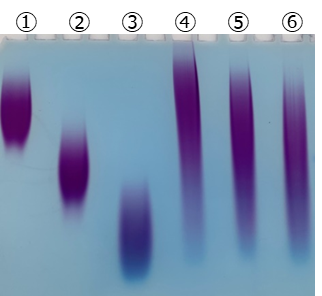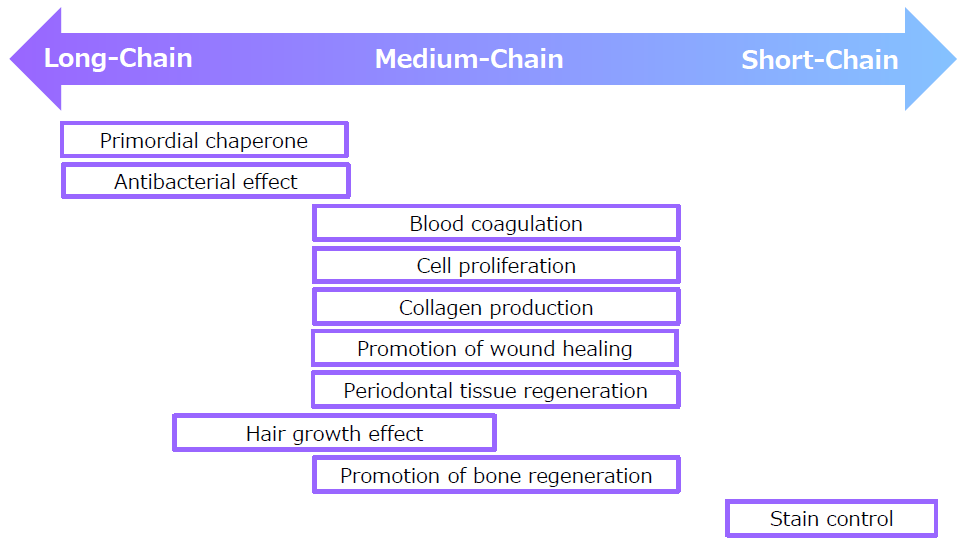EX-PolyP® (sodium polyphosphate)

It is known that polyphosphate (polyP), a biological macromolecule, functions differently depending on its molecular weight (chain length). PolyP binds to various proteins and modifies their functions. Recent research demonstrated that polyP is involved in blood coagulation1), complement activation2), inhibition of vascular endothelial inflammation3), infection control4), primordial chaperones5), functional modification of cytokines6), as well as inhibition of binding between spike proteins in COVID-19 and ACE2 receptor7). Since these polyP functions depend on its chain length, polyP with a limited molecular weight range should be used for accurate experiments.
RegeneTiss Inc. succeeded in controlling the molecular weight of polyP and launched EX-polyP® (sodium polyphosphate) limited to a narrow molecular weight range, which has never produced before. Three types of product, long-chain (L), medium-chain (M) and short-chain (S) polyP which are found in living organisms, are available. It is possible to verify the functional difference of different chain length of polyP with high precision. Please use it for various researches.
Features
- Each molecular weight range is strictly controlled by supplier’s original purification method
- Available in 3 types, including long, medium, and short chain lenghts
- Ready-to-use aqueous solution
Molecular weight distribution of polyphosphate

Migration distance in electrophoresis
①Long-Chain(L) (Average chain length: 130)
②Medium-Chain(M) (Average chain length: 60)
③Short-Chain(S) (Average chain length: 14)
④Other company (Average chain length: 75 +)
⑤Other company (Average chain length: 65)
⑥Other company (Average chain length: 45)
| Electrophoresis conditions -15% PAGE (TAE buffer, 150V, 50min) -①-③ Samples (2μl/lane):L、M、S each 0.1M (as Phosphoric acid) -④‐⑥ Samples (5 μⅬ/lane) :75+、65、45 each 0.1M -Stained with Toluidine blue |
Effect of polyP at different chain length

References
- Müller, F. et al.: Cell., 139, 1143 (2009).
- Wijeyewickrema, L. C. et al.: Blood., 128. 1766 (2016).
- Terashima-Hasegawa, M. et al.: Biochem. Pharmacol., 159. 96 (2019).
- Roewe J. et al.: Nature Com., 11. 4035 (2020).
- Gray, M. J. et al.: Mol. Cell., 53. 689 (2014).
- Shiba, T. et al.: J. Biol. Chem., 278. 26788 (2003).
- Neufurth, M. et al: Biochem Pharmacol., 182. 114215 (2020).
Product List
- Open All
- Close All
For research use or further manufacturing use only. Not for use in diagnostic procedures.
Product content may differ from the actual image due to minor specification changes etc.
If the revision of product standards and packaging standards has been made, there is a case where the actual product specifications and images are different.
The prices are list prices in Japan.Please contact your local distributor for your retail price in your region.



